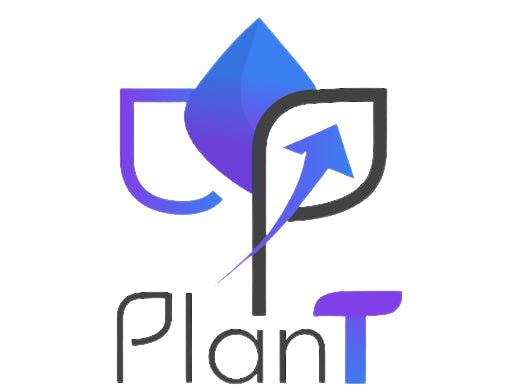The CI/CD pipeline is distinct from the software environment that hosts your application, but it’s nonetheless linked inextricably to it. A healthy pipeline is one that allows your team to write, build, test, and deploy code and configuration changes into the production environment on a continuous basis. Monitoring performance is crucial for maintaining smooth operations, understanding the application’s overall health, and ensuring a good user experience and efficient resource utilization. Compliance with service level agreements (SLAs) and business goals often necessitates performance monitoring. Yet the typical organization still relies on performance monitoring technology designed before CI/CD was the application delivery model.

If errors occur during testing, the results are looped back to developers for analysis and remediation in subsequent builds. A pipeline is just another way of characterizing the series of steps involved in deploying a new version https://www.globalcloudteam.com/ of software. Monitoring and automation are concepts introduced in a CI/CD pipeline to improve the app development process, especially during the integration and testing phases, as well as when software is delivered and deployed.
Continuous Delivery
CI/CD and other agile pipelines are ecosystems composed of tools tied together with processes and automation, with myriad alternate paths and steps for different products. Teams should always evaluate new tools and refine the processes to keep the overall pipeline as smooth and efficient as possible. Integration and delivery work together but are often implemented separately and handled by different teams, such as coders and testers.

CI/CD, coupled with automating your load tests, is a faster, productive, and cost-saving approach for shipping new product features and enhancements with minimum risk for the production environment. You can use Jenkins to automate your CI/CD pipeline with the LoadView plugin and decide on the acceptance of new builds to move ci cd monitoring forward in development life cycle. Loadview offers the most realistic load test environment with real browser testing, different geographical locations, and load curves to meet your testing requirements. The continuous integration process typically uses automation tools for testing and building to reduce manual efforts.
Learn CI/CD
Our product, Retrace, provides a holistic view of all the data developers need in one place. Developers can quickly access server & application metrics, application errors, logging, and even code level performance data. Developers can “Retrace” what their code is doing to quickly identify problems and opportunities for improvement. Most APM solutions automatically discover and help you track all of your applications across all environments. The deployments to the test and production environments are
separated into two different Cloud Build pipelines–a test and a
production pipeline. A monolith consists of components that are tightly integrated within a single source code base.
While source code has already completed some static testing, the completed build now enters the next CI/CD phase of comprehensive dynamic testing. This usually starts with basic functional or unit testing to verify that new features and functions work as intended, and regression testing to ensure that new changes or additions do not accidentally break any previously working features. The build also undergoes a battery of tests for integration, user acceptance and performance.
Benefits and challenges of a CI/CD pipeline
It’s a tech process, it’s a mindset, it’s a series of steps… CI/CD is all of those things. Put simply, CI enables DevOps teams to streamline code development using automation. CI simplifies software builds and source code integration, enables version control, and promotes greater collaboration via automation. Where CI leaves off, continuous delivery kicks in with automated testing and deployment. Not only does CD reduce the amount of “hands on” time ops pros need to spend on delivery and deployment, it also enables teams to drastically reduce the number of tools required to manage the lifecycle.
This saves a lot of time as developers do not have to carry out manual unit tests that are time-consuming and less effective in detecting early bugs. Discover the leading enterprise observability platform for hybrid clouds. Improve application performance management and accelerate CI/CD pipelines no matter where applications reside.
SD Times
In regard to delivering high quality software, infusing performance and security into the code from the ground up, developers should be able to write code that is QA-ready. To deploy this architecture, see
Deploy a CI/CD pipeline for data-processing workflows. Using a task-orchestration framework such as Cloud Composer to manage
the data-processing workflow helps alleviate the code complexity of the
workflow. In the DAG definition for the test environment, an end-to-end test step is
defined in addition to the data-processing workflow. The test step helps make sure that the
data-processing workflow runs correctly. Automate your builds, tests, and releases.Deliver faster and with confidence.
- This tantalizing proposition depends on the quality of the testing, the integrity of the automation behind it, and the careful attention of testers and software engineers.
- Most application performance monitoring tools measure performance in one way or another but they rarely understand the full context of the application itself.
- It’s important to know the difference if you are planning to use an APM tool to troubleshoot app issues and need more visibility into performance bottlenecks.
- Integration with DevOps practices will promote collaboration and continuous improvement.
- The principal difference between delivery and deployment is that continuous deployment automatically deploys each validated build to production.
- For example, if tracing shows a performance problem in production that requires a code change to fix, CI/CD pipeline metrics about work-in-progress and deployment time will help predict how long it will take to implement the fix.
While it may seem counterintuitive since CI/CD is about accelerating the pace of software delivery in an automated fashion, start the process with a mentality of slow and steady. The boost in efficiency will decline if bugs are steadily moving into the finished application. Change failure rate is one of the four DORA metrics that DevOps teams use for measuring excellence in software delivery. The time to restore service chart shows information about the median time an incident was open in a production environment. Deployment frequency is one of the four DORA metrics that DevOps teams use for measuring excellence in software delivery. Automated unit testing allows developers to discover bugs as a result of build failures at an early stage.
Get the latest news, tips, and guides on software development.
Usually, CI is known to be a developer’s practice and CD an operator’s practice. CI’s mission is to provide an artifact at some point in time of the application that satisfies customer expectations—in other words, that has good quality built in. When you have a large number of synthetic tests to run, keeping track of them all and executing them effectively becomes a challenge. Don’t take an ad hoc approach where you simply keep a library of tests on hand and try to remember which ones need to run when. Instead, use a synthetic monitoring tool that allows you to orchestrate test execution as well as keep track of changes to your tests.

These systems are highly dynamic and produce vast amounts of telemetry data, especially when built on microservices architecture. As the use of microservices continues to grow, the importance of performance monitoring tools will also rise. The future of performance monitoring will be increasingly influenced by AI and machine learning, which can identify patterns and anomalies effectively. There is a wide variety of CI/CD tools that can be used for mobile app development. Continuous integration (CI) focuses on the early stages of a software development pipeline where the code is built and undergoes initial testing.
How Does Synthetic Monitoring Work?
Critical for root-cause analysis to address performance issues quickly. A key element of the CI/CD process that is missing today and is slowing down the release process. If the build completes successfully and passes initial test scans, it moves to the CI/CD testing phase. A development team may employ several editors or IDEs to support multiple languages for different projects. Use the CI/CD analytics page to view pipeline success rates and duration, and the history of DORA metrics over time. I’m passionate about communicating complex problems into understandable and sizeable bits.
